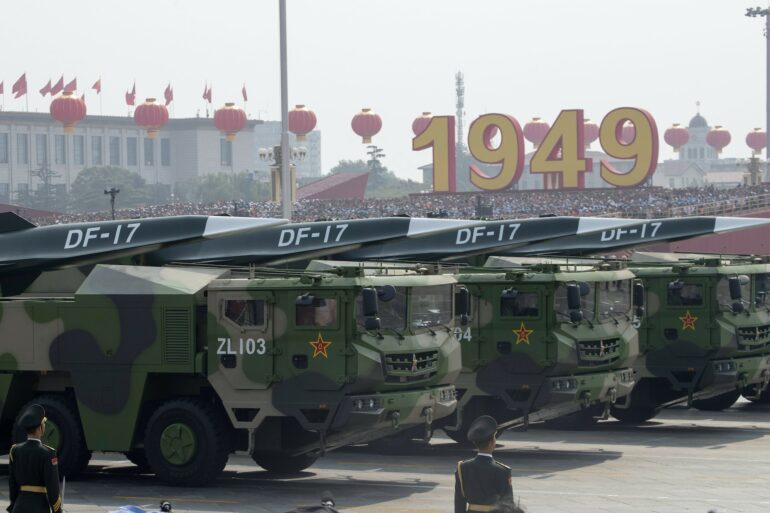China’s newest hypersonic missile, the DF-27, can fly as far as Hawaii, penetrate U.S. missile defenses and pose a particular threat to U.S. aircraft carriers, according to news reports of an assessment from the Pentagon.
Chinese researchers claimed in a May 2023 research journal report that the country’s hypersonic missiles could destroy a U.S. carrier group “with certainty.” This capability threatens to sideline U.S. aircraft carrier groups in the Pacific, potentially shifting the strategic balance of power and leaving the U.S. with limited options for assisting Taiwan in the event China invades.
This shift in the balance of power highlights how the next-generation hypersonic missiles that China, Russia and the U.S. are developing pose a significant threat to global security. I am an aerospace engineer who studies space and defense systems, including hypersonic systems. These new systems pose an important challenge due to their maneuverability all along their trajectory. Because their flight paths can change as they travel, defending against these missiles requires tracking them throughout their flight.
A second important challenge stems from the fact that they operate in a different region of the atmosphere from other existing threats. The new hypersonic weapons fly much higher than slower subsonic missiles but much lower than intercontinental ballistic missiles. The U.S. and its allies do not have good tracking coverage for this in-between region, nor do Russia or China.
Destabilizing effect
Russia has claimed that some of its hypersonic weapons can carry a nuclear warhead. This statement alone is a cause for concern whether or not it is true. If Russia ever operates this system against an enemy, that country would have to decide the probability of the weapon being conventional or nuclear.
How hypersonic missiles threaten to upend the relative stability of the current era of nuclear weapons.
In the case of the U.S., if the determination were made that the weapon was nuclear, then there is a very high likelihood that the U.S. would consider this a first strike attack and respond by unloading its nuclear weapons on Russia. The hypersonic speed of these weapons increases the precariousness of the situation because the time for any last-minute diplomatic resolution would be severely reduced.
It is the destabilizing influence that modern hypersonic missiles represent that is perhaps the greatest risk they pose. I believe the U.S. and its allies should rapidly field their own hypersonic weapons to bring other nations such as Russia and China to the negotiating table to develop a diplomatic approach to managing these weapons.
What is hypersonic?
Describing a vehicle as hypersonic means that it flies much faster than the speed of sound, which is 761 miles per hour (1,225 kilometers per hour) at sea level and 663 mph (1,067 kph) at 35,000 feet (10,668…



